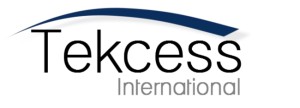Capital equipment buyers want to buy from suppliers that address their specific issues and needs. The master value proposition developed for a product’s market segment does not consider how value drivers and their effect on individual customers vary within a market segment. Therefore, salespeople must tailor the value proposition to address what matters to the prospect, not some one-size-fits-all solution.
To tailor your value proposition, first, discover the details of your customer’s buying scenario. These details include the effect of value drivers on their use case, others suppliers being considered, planned purchase volume, and non-product opportunities to create value. Then adjust your product’s master value proposition to your customer’s buying scenario.
Product Management vs. Sales Team Roles in Defining Value Propositions

A product manager is responsible for providing the sales team with a sales kit that supports the master value proposition for each target market segment. The sales kit should contain materials that address common needs across a market segment plus materials that can be mixed and matched to accommodate individual customer buying scenarios.
The sales team is responsible for discovering the details of an individual customer’s buying scenario and then tailoring the value proposition and sales kit contents according to what they learned. Tailoring the value proposition and sales kit may entail using some content as is, mixing and matching, editing, or adding custom content.
2 Ways to Uncover the Details Needed to Tailor Your Value Proposition
You will need to embark on a sales discovery process to uncover the details of your customer’s buying scenario before you can tailor your value proposition to them. The why-buy presentation is the perfect tool for this. It contains all the elements of your value proposition, including
- A customer problem statement and supplier expectations,
- Your competitive advantages and sample data to support them. and
- A value model that shows your value proposition as the economic outcome the customer can expect when buying from you versus the alternatives.
There are two ways to use the why-buy presentation in your discovery process.
- Discover first, then present
- Present to discover
In the discover-first-then-present method, you ask the customer a series of questions to uncover their needs, challenges, and goals as they relate to the content in the master why-buy presentation. Once you have ascertained the details you need, tailor the why buy presentation to address your customer’s buying scenario.
In the present-to-discover method, present the master why-buy presentation to provoke a conversation about the customer’s buying scenario. You can present it as an example of how your product creates unique value for customers similar to your prospect. During your presentation, ask your discovery questions. For example, if you are on a slide that compares your product to Competitor X’s, ask the prospect if that’s a useful comparison for them, or are there others that they are considering. Sometimes you won’t even have to ask, your prospect often will volunteer disconnects between your example and their situation.
Either approach should uncover the details you need to tailor your value proposition to your prospect and put you on a path to a win at a value-based price.

